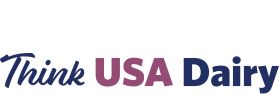Managing Price Volatility
Dairy Futures

Buying U.S. Dairy Using CME Dairy Futures
Assume you are a buyer in July 2015 and you are making your procurement plan for Jan 2016. You will need to buy 100 metric tons (mt) (roughly 220,000 lbs.) of U.S. cheese in January 2016 for anticipated seasonal demand.
Looking at the CME Futures Market, you realize that the price for January 2016 is offered at $1.70/lb. ($3,750/mt equivalent) which is significantly lower than the prior years' price and below your budget target. You are concerned that the price may increase between July 2015 and January 2016 and want to secure the current price and ensure you achieve your budget goal.

You secure this price by calling your broker and buying 11 contracts (each CME cheese contract is 20,000 lbs., roughly 9 mt) at the market price of $1.70/lb. ($3,750/mt).
In January 2016, you will source your physical product from a U.S. supplier and provided the Futures correlate to the physical market they will be protected against an adverse price movement.
For example, if the physical market price (as published by the U.S. Department of Agriculture's Agricultural Marketing Service (AMS)) increased to $4,000/mt, you will pay close to this higher market price for your physical product but will receive $250/mt profit from your Futures trade to compensate for this price movement, yielding a true cheese cost of $3,750/mt.
However, if the market price decreases to $3,500/mt, you will source your physical product close to this lower price but will have a $250/mt loss on your Futures contract, bringing your net price back up to the $3,750/mt.
In summary, a Futures contract has a similar end result to a Forward contract but with additional flexibility, anonymity, liquidity and less counterparty risk.
